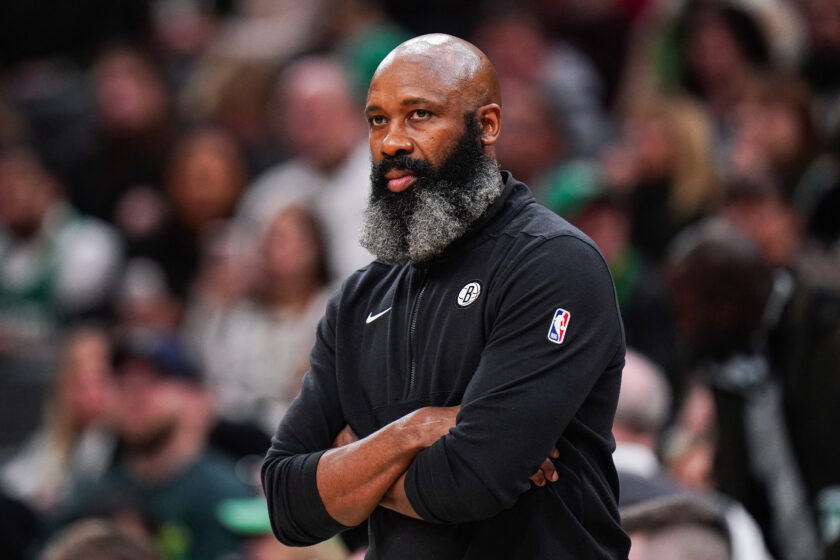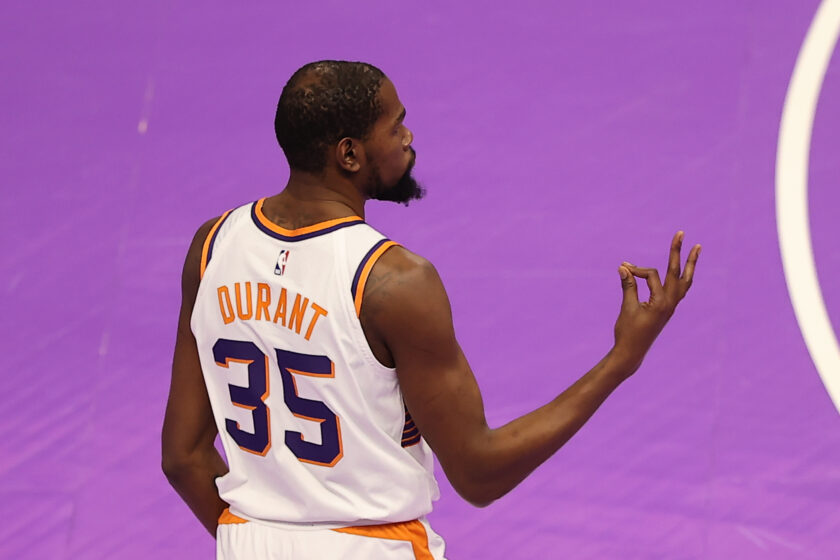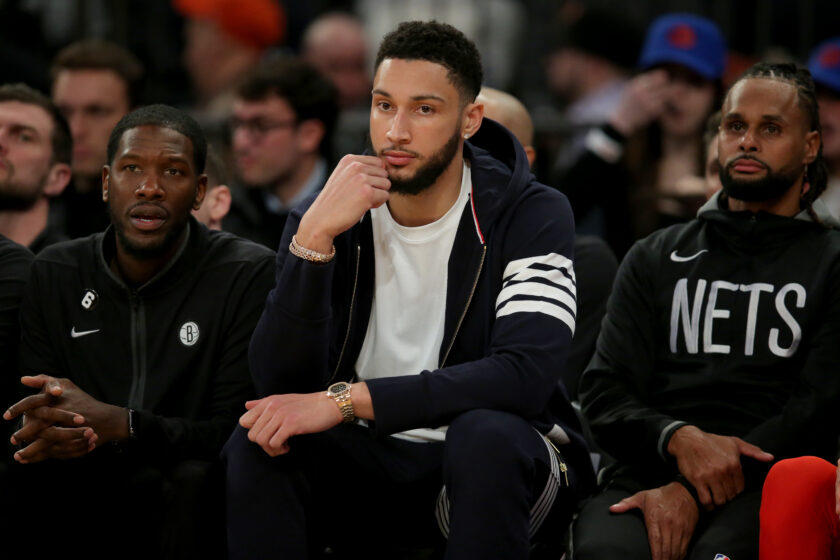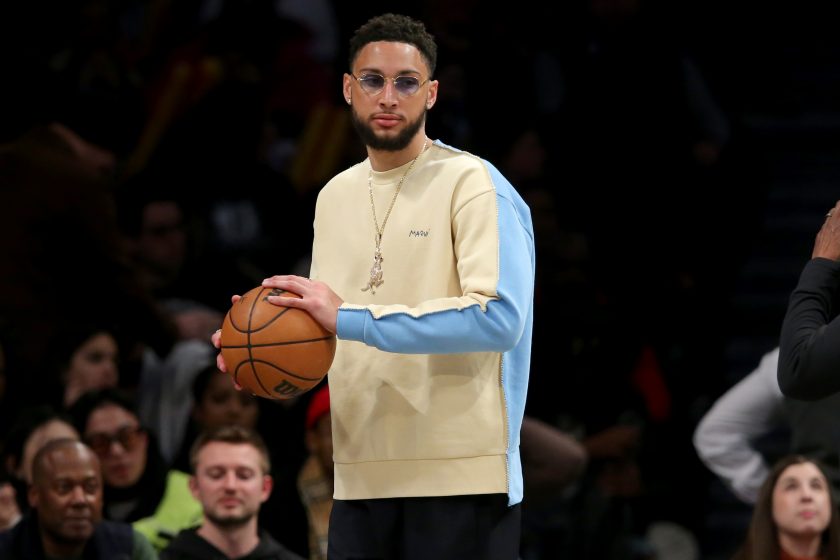Brooklyn Nets: Rodions Kurucs is the necessary energizer for a playoff run (Film Room)

Brooklyn Nets rookie Rodions Kurucs has been immensely impressive since entering the starting lineup and he’s filling a vital role.
Every great team has high-quality role players.
The record-setting 2016 Golden State Warriors had a roster full of these guys.
Andre Iguodala was the multi-positional defender who could guard a range of players, including Chris Paul, Kevin Durant, or even James Harden.
Shaun Livingston was a mismatch nightmare, whose low-post game was the perfect complement to the Warriors’ three-point-centric offense. Night after night, Livingston would use his skyscraper-like stature to bring shorter guards to the block where he would torch them for easy buckets.
You could even make the case that regardless of his All-Star status, Draymond Green was the Omega Level version of a guy playing within a specific role. Green was (and still is) the enforcer for the Warriors, acting as the necessary Gorilla Super-Glue for a 73 win team.
These important pieces, combined with the unassailable star-power of Stephen Curry, fueled one of the most hypnotizing Finals runs in NBA history.
[sc name=”Nets Center”]the Brooklyn Nets have been a sum of their parts this season. In many ways, they have adopted Golden State’s somewhat-forgotten slogan of “strength in numbers.”
Without a star on their roster, the Nets have been on a tear as of recent, winning 10 of their last 13 games.
Outside of maybe the Sacramento Kings, Brooklyn has been one of the league’s most surprising teams. Much of this is due to quality play from guys excelling in one role.
Ed Davis is an undersized center with an insatiable hunger to grab offensive boards. Davis is capable of coming off the bench at any time to create second-chance opportunities.
Joe Harris is a lights-out shooter, skillful at curling around screens and launching gravity-changing bombs in clutch moments.
Hell, Brooklyn is so deep, that even their fourth-string guard can drop 30 on a given night.
The balanced attack from Brooklyn’s ten-man rotation has been enthralling to play spectator to. Recently, there has been one player that has stood out in particular.
Rodions Kurucs, Brooklyn’s 20-year-old rookie, has been an immediate contributor since being inserted into the starting lineup.
Kurucs is an energizer with the longevity of a Lithium AA Battery. With a gas tank that never seems to hit empty, Kurucs has used his motor and all-around game to get fans (and teammates) drooling.
AK-47 remember him? https://t.co/axvPk2HKe5
— Jared Dudley (@JaredDudley619) January 3, 2019
Being compared to a three-time All-Defensive player and constant five-by-five threat may seem like high praise. It’s not. Dudley’s comparison may not be so far off. Kurucs is already Brooklyn’s best two-way threat on the active roster. (Although that will change when Caris LeVert returns).
Looking at Kurucs’ per-game numbers, a claim like this may raise a few eyebrows. Over the course of the season, Rodions Kurucs is averaging 8.7 points, 3.2 rebounds, 0.6 assists, 0.4 blocks, and 0.5 steals.
However, when you stretch out his numbers over a larger minutes sample, you start to get an idea of who Kurucs could become.
Kurucs averages 16.1 points, 7.0 rebounds, 1.2 assists, 0.9 steals, and 0.7 blocks per 36 minutes according to Basketball-Reference.
Now look, I hate per-36 numbers as much as the next guy. They don’t take into account the mental and physical attrition that comes with playing a full NBA game.
But there’s something to be said about these impressive per-36 numbers, especially when glancing at his advanced metrics.
Brooklyn’s net rating with Kurucs on the floor is plus-4.5. With him off the court, that rating drops all the way to minus-3.3.
Like Kirilenko before him, Kurucs’ calling card is defense. With Kurucs on the bench, Brooklyn’s defensive rating sits at 111.5. Over a full season, this would be a bottom-five mark.
With Kurucs on the floor, Brooklyn’s defensive rating sits at a respectable 107.1. The difference between these two numbers is massive; it’s akin to comparing Toronto’s defense with Atlanta’s.
The chase-down block is a staple for Kurucs on defense.
Kurucs has incredibly nimble feet for his size. He also comes equipt with a 7-foot-2 wingspan. This would make current Orlando Magic GM and wingspan aficionado, John Hammond, salivate.
These physical tools allow Kurucs to save face on the plays where he gets beat off the dribble. The results are impressive come-from-behind blocks.

Given his slightly uncoordinated running form and gawky stature, many of his opponents appear to underestimate his athletic prowess. Kurucs takes full advantage of this, surprising his opponent with the ability to stay step-for-step with them. His awkwardness, in a sense, becomes a major strength.

Here, the Lakers’ uber-athletic forward, Kyle Kuzma, drives a seemingly open lane. Kurucs does a miraculous job recovering, bodying up Kuzma to the point where he misses a tough layup.
If Kurucs can add more muscle to his slender 210-pound frame, we’ll see more plays like this. Eventually, Kurucs will be able to challenge all opposing forwards and force them into fall-away misses with regularity.
Kurucs has excellent hand-eye coordination in combination with a great IQ. It’s a major reason why he could eventually become a league-leader in steals per game.
Kurucs is especially adept at making timely steals near the free-throw line; an unusual area of the court to be so strong from. Opponents shoot a low 40 percent from midrange against Kurucs and it’s largely because of plays like this:

In the first clip, Kurucs disrupts a normally-sound Indiana playset by dislodging the ball toward mid-court. Although this may seem like a minute detail, the Pacers are forced to scramble on the fly, resulting in an offensive foul.
Small deflections can make the difference in important games, and it’s high-effort plays like this that make Kurucs worth watching.
Currently, he’s sixth on the team in deflections at 1.1 per game. Expect this number to jump as the team grows more accustomed to his style of play.
Kurucs uses his nose for the ball to poke away steals. These steals produce transition offense, an essential ingredient in modern basketball. As it stands, 10.4 percent of Kurucs’ total points come from opponent’s turnovers.

The Nets currently rank 27th out of 30 teams in points off of turnovers. Kurucs’ ability to appear out of thin air for steals will certainly help boost that nauseating ranking.
Scoring in transition is one of the many ways that Rodions Kurucs contributes offensively.
Brooklyn’s advanced offensive numbers also support the claim that Kurucs is a necessary part of their winning formula. Their offensive rating with Kurucs is 111.6, a top-six level mark in the league. Without Kurucs, that rating sits at 108.2; a score that matches the bottom-third of the league in efficiency.
Kurucs has been uber-efficient from the field, scoring the ball on a 49 percent field-goal percentage. The only Nets’ players who have fared better: the spot-up artist, Joe Harris, and the two big men, Ed Davis and Jarrett Allen; both of whom score primarily off of lob-dunks and putbacks.
Even as a rookie, Kurucs is already a dependable source of offense through his drives. Although it is a small sample, Kurucs averages 3 drives per game and shoots a tasty 55.9 percent field-goal percentage on 1.5 attempts.
The secret sauce to Kurucs’ driving game is similar to that of his chase-down defense. In both scenarios, Kurucs uses his unique physical structure and overlooked athleticism to catch guys by surprise.

The second clip in this video is especially important. Matched up with one of the best perimeter defenders in the league, Victor Oladipo, Kurucs hesitates and barrels to the rim. Oladipo, unaware of Kurucs’ strong first-step, gets beaten off the dribble and is forced to foul the rookie forward.
Interestingly, much of Kurucs’ driving offense comes from the wing (as seen in the video above). Outside of the catch-and-shoot and lob dunks, Kurucs’ most frequent source of offense comes from plays with 3-to-6 dribbles, according to NBA.com’s tracking data.
Kurucs has the efficiency to match this frequency, too. His 60.4 percent effective field-goal percentage on 3-to-6 dribbles ranks number one on Brooklyn’s roster.
Occasionally, Kurucs will bust out an awe-inspiring move while getting to the cup, such as this gorgeous spin move against the 76ers.

Keep in mind, that’s a 20-year-old rookie making this play.
Kurucs needs to improve the “kick” part of his drive-and-kick offense. His assist total is low, even on a per-36 basis, and he needs to work on passing to open shooters while driving. He has the tendency to collide into defenders on his drives, resulting in offensive fouls. It’s a big factor in his poor assist-to-turnover rating (0.61 AST/TO).
Kurucs scores many of his points off of clever cuts to the rim. Much like his teammate, Harris, Kurucs has excellent awareness of when to sneak behind his defender’s back.

Timing is everything on these plays, and it’s remarkable that Kurucs can already display veteran-level tactics on off-ball cuts.
Kurucs’ three-point shot is still TBD, and he’s shooting 31.5 percent from three this season. His shot comes and goes, but the rookie does have a nice stroke. There are moments when he showcases his potential from the behind the arc.

Although his release is slow, the shot is smooth. Kurucs avoids the dreaded “hitch” that befalls many slow-release shooters. (Looking at you, Rondae Hollis-Jefferson).
The fact that the 20-year-old even has the confidence to take off-the-dribble shots speaks volumes about the rookie’s confidence. His size alone will always be an advantage when shooting the long-ball. I have no doubt in my mind that Kurucs will be an at minimum league-average shooter.
The last part of Kurucs’ offensive game is perhaps my favorite: offensive rebounding.
From the second he stepped on the court this season, Kurucs made it known that he was a bonafide hustler. Kurucs is a fearless offensive rebounder, grasping for boards whenever possible.

Wingspan and willpower fuels Kurucs’ second-chance dexterity. While Ed Davis is the most celebrated for his power on the offensive glass, Kurucs has shown similar ability to grab boards amidst a sea of arms.
In fact, Kurucs is so good at grabbing offensive boards that he ranks ahead of Davis and the rest of the team in contested offensive rebounding percentage. The rookie secures a stunning 76.2 percent of his offensive rebound chances.
This, my friends, is one of the many statistics that are representative of Rodions Kurucs’ potential as a two-way unicorn. Suddenly, that AK-47 comparison doesn’t seem so frivolous.
[sc name=”Nets Link Next” link=”https://elitesportsny.com/2019/01/04/brooklyn-nets-face-tough-schedule-in-not-so-distant-future/” text=”Brooklyn Nets Face A Tough Schedule In The Not-So-Distant Future” ]An NBA fanatic who specializes in the advanced analytics of the game. I cover the Brooklyn Nets here in the city. Follow me on Twitter for semi-witty basketball tweets. @MattBrooksNBA






